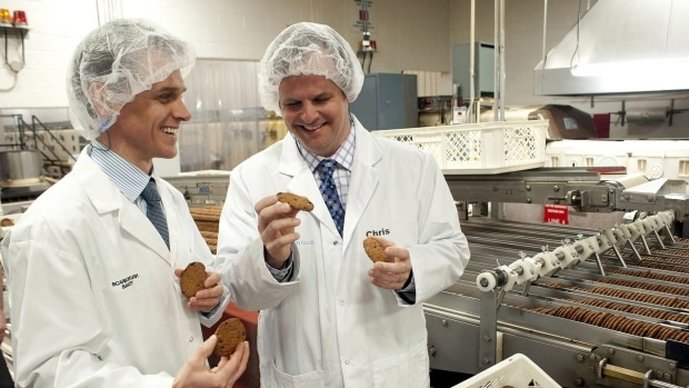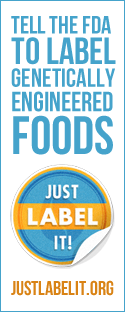|
OTTAWA -- As the incoming Trump administration talks about piling on new tariffs to discourage imports and protect American jobs, the Canadian government quietly moved in the opposite direction over the holidays: eliminating tariffs.
Also read, Irish farmers and unions call for CETA to be rejected. Why? To support Canadian jobs. A customs tariff order published Dec. 28 in the Canada Gazette describes how roughly 200 different tariffs on imported food ingredients will be repealed or amended. The order says that based on recent import levels, an estimated $48 million in tariffs are collected annually on these products. That's roughly how much revenue the government now gives up. And what manufacturers will save, accordingly. The cuts took effect Jan. 16. Some food ingredients already entered Canada tariff-free under the North American Free Trade Agreement (NAFTA.) But Finance Canada estimated that about 57 per cent of these imports were subject to tariffs. The duties averaged about five per cent. Surprise! It's duty-free now Wanting to boost the competitiveness of Canadian manufacturing is not new: the 2009 and 2010 budgets of the previous Conservative government cut tariffs on imported machinery and equipment. The Liberals have added agri-food ingredients to that list. They floated the idea in last spring's budget and a consultation followed. But no minister or press release popped up to say what was decided. A long list of fruits and vegetables, cereals and grains, spices, fats and oils, food preparations and chocolate products — but nothing from the dairy, egg and poultry sectors covered by Canada's controversial supply management system — now classify as duty-free. Some new tariff classifications were created to ensure foods destined for retail sale don't slip through. The new cuts took hold without any fanfare. One food manufacturer contacted by CBC News to comment on the potential savings hadn't even heard about it yet. But the Food & Consumer Products of Canada, the largest industry group representing familiar brands like Campbell's, Kellogg's and Kraft, has been lobbying for a change like this for several years. "This is a really positive step," said Carla Ventin, the association's vice-president of federal government affairs. 'Moving in a different direction' The industry's cause is fashionable now, with the chair of Finance Minister Bill Morneau's economic advisory panel, Dominic Barton, touting the growth potential of the Canadian agri-food industry as international food demand grows. Cutting these tariffs in a more protectionist international trade climate — with the United Kingdom's Brexit split from the European Union's single market looming and an incoming U.S. administration musing about what tariff walls it might erect to protect domestic industries — is even more interesting. "This government is moving in a different direction," Ventin said. It's recognized that North American manufacturing is highly integrated. "Products cross back and forth across the border," she said. "We don't grow everything in Canada. We don't process everything in Canada." No banana or pineapple trees grow here. There's no such thing as Canadian-grown cocoa. Need papaya for your chutney? That comes from somewhere else. Common spices and seasonings like black pepper, nutmeg and cinnamon now enter tariff-free. Threat to domestic growers? The tariff list also includes produce that does grow in Canada. The Canadian Horticultural Council, which represents domestic growers, says it wasn't notified of last spring's consultation. "At the moment, we can't say with certainty how much of an impact the regulation will have on our members," said a statement from its president, Keith Kuhl. Food processors don't see a serious risk of domestic ingredients being displaced. "Supply chains with companies are unique and well-established. They don't change overnight," Ventin said, citing Canadian food safety and environmental standards and transport costs as reasons why Canadian manufacturers buy local if they can. "A great deal of thought went into which tariff items … will be removed," she said. But crops sometimes fail. International suppliers are sometimes the only alternative. "I'm not sure how much it will save," said Chris Kyte, the president of the Food Processors of Canada, which represents about 100 Canadian-owned companies that make things like frozen entrees, pizza and beverages. "It's one step to becoming more competitive," he said. "While it might be a 10 per cent or a 20 per cent tariff, and it might not be a large ingredient, every little bit helps, right?" Particularly in a tight-margin business like the food industry. "What I find gratifying is that the government recognizes that food manufacturing is important," Kyte said. "You think of the way they fawn over car companies. They would have gotten this a long time ago." Large employer Food manufacturing employs about 300,000 Canadians nationally — not only in large, urban enterprises but also in small, local facilities closer to farm suppliers. "It's the largest employer in rural Canada and we do a large export business," Kyte said. The government's move levels the playing field. "In the United States they got rid of tariffs on [food ingredient] inputs a long time ago," he said. "Our government's really getting around to it today." SOURCE Janyce McGregor, CBC News
0 Comments
Your comment will be posted after it is approved.
Leave a Reply. |
Advertisement
News & Updates
Stay informed with the latest news around foodservice, agriculture and other related food news. Advertisement Opportunities
|


 RSS Feed
RSS Feed


